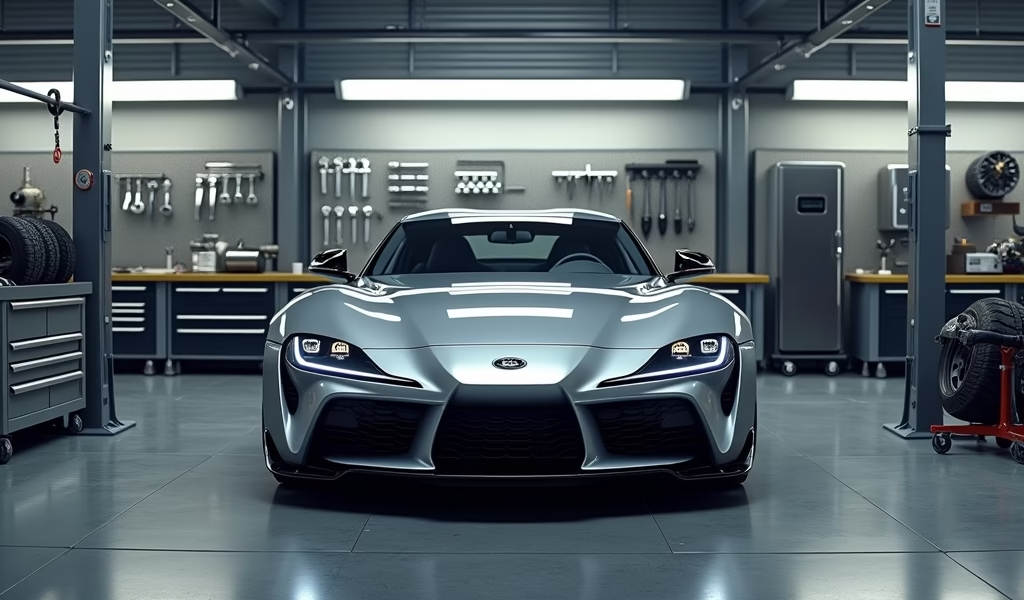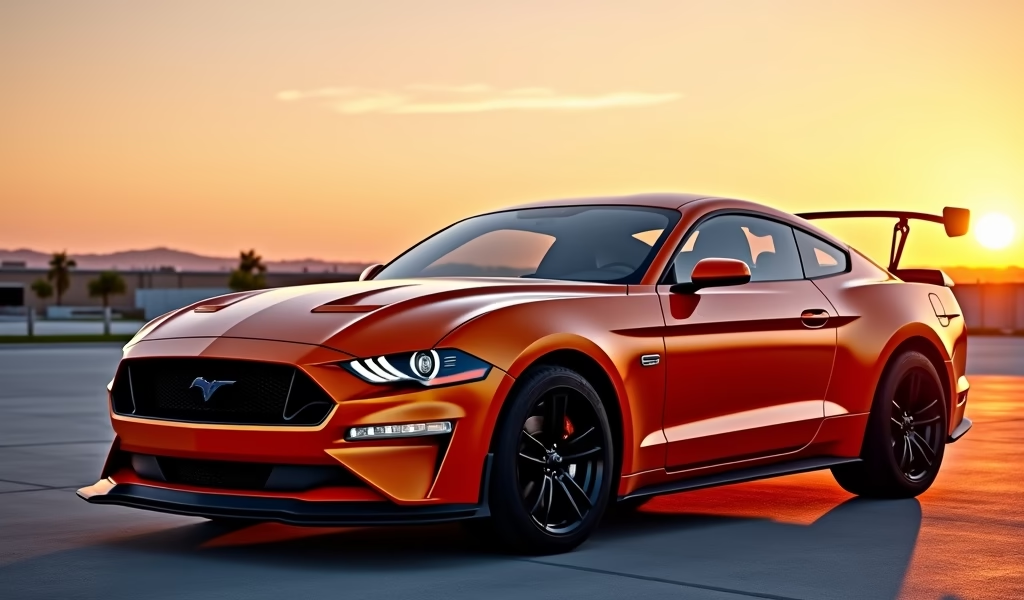Overview
This article guides budding car enthusiasts on selecting their first vehicle, recommending five ideal starter cars (Miata, Civic, Mustang, Golf/GTI, and 4Runner/Cherokee) while emphasizing the importance of balancing purchase cost with maintenance funds, conducting thorough pre-purchase inspections, and joining automotive communities. It frames the first car as not just transportation but a learning opportunity that builds mechanical skills and serves as an entry point to automotive enthusiasm, with the author drawing on 20 years of mechanic experience to provide practical advice on budgeting, inspection techniques, and maintenance priorities.
Table of Contents
- Introduction: Finding Your First Automotive Soulmate
- Understanding Your Needs and Capabilities as a Car Guy
- 5 Perfect First Cars for the Budding Enthusiast
- Budget Considerations: Balancing Dreams with Reality
- Pre-Purchase Inspection Tips from a Mechanic’s Perspective
- Maintenance as a Learning Opportunity
- The Importance of Finding Your Car Community
- Conclusion: Your First Car Journey Begins
- Frequently Asked Questions
Introduction: Finding Your First Automotive Soulmate
Choosing good first cars for car guys isn’t just about transportation—it’s about beginning a relationship with machines that might last a lifetime. As a mechanic who’s seen countless gearheads take their first steps into automotive passion, I can tell you that this decision carries weight beyond just getting from point A to B. Your first car as an enthusiast sets the foundation for your mechanical knowledge, driving skills, and even your identity in the automotive community.
The right first car strikes a delicate balance: approachable enough for a novice to work on, fun enough to spark passion, reliable enough not to become discouraging, and affordable enough not to empty your wallet before the journey begins. Having guided many young enthusiasts through this pivotal decision over my 20-year career turning wrenches, I’ve developed a solid framework for making this choice one you’ll look back on fondly.
Whether you’re drawn to Japanese tuners, American muscle, European engineering, or something entirely different, the principles remain consistent. Let’s dive into finding that perfect first vehicle that will nurture your budding automotive obsession while teaching you valuable skills along the way.
Understanding Your Needs and Capabilities as a Car Guy
Before diving into specific models, let’s have an honest conversation about where you stand in your automotive journey. Not every car enthusiast starts with the same skills or interests, and recognizing your personal starting point is crucial for making a wise first car purchase.
First, assess your mechanical abilities truthfully. Have you changed oil before? Replaced brake pads? Or are you starting completely fresh? There’s no shame in being a beginner—we all started somewhere. But your current skill level should influence your choice. A mechanically simpler vehicle with abundant online tutorials and forums might serve you better than something exotic or complex if you’re just starting to turn wrenches.
Next, consider your automotive interests. Are you drawn to spirited driving on twisty roads? Quarter-mile acceleration? Off-road adventures? Or perhaps meticulous restoration projects? Different vehicles cater to different enthusiast niches. According to a J.D. Power study on enthusiast preferences, matching your vehicle to your specific interests dramatically increases long-term satisfaction.
Finally, be honest about your available time and space. Working on cars requires both. Do you have a garage or at least a driveway? Tools? Weekend hours to dedicate to your new hobby? Your living situation and lifestyle should inform your choice as much as your mechanical dreams.

5 Perfect First Cars for the Budding Enthusiast
After helping hundreds of new car enthusiasts find their first mechanical companion, I’ve identified five vehicles that consistently provide the perfect balance of affordability, mod-friendliness, reliability, and character. These aren’t just transportation appliances—they’re gateways to automotive passion.
1. Mazda Miata (1990-2005)
The Miata has become almost a cliché recommendation for a reason. This lightweight roadster offers:
- Incredibly accessible engine bay where components are easy to reach
- Simple, robust mechanical design with minimal electronics
- Rear-wheel drive handling that teaches fundamental driving skills
- Massive aftermarket support with parts at every price point
- A dedicated community ready to help newcomers
The beauty of the Miata lies in its forgiving nature. You can make mistakes while working on it without creating catastrophic issues. Its responsive handling provides immediate feedback to drivers without overwhelming power that could get you into serious trouble. As one customer told me after six months with his NA Miata, “I’ve learned more working on this car than in four years of high school auto shop.”
2. Honda Civic (1992-2000)
The fourth and fifth generation Civics represent perhaps the most approachable entry point to import tuning culture:
- Legendary Honda reliability means you won’t be stranded often
- Simple front-wheel drive platform with parts available everywhere
- Engines that respond remarkably well to basic modifications
- Excellent fuel economy even when driven enthusiastically
- Practical enough to serve as daily transportation
What makes these Civics special is their balance. They’re practical enough to justify to parents or partners while still being genuinely fun to modify and drive. The engine bay is uncluttered, with excellent accessibility for learning basic maintenance. Their popularity also means you’re never far from fellow enthusiasts or online tutorials.
3. Ford Mustang (1994-2004)
For those drawn to American muscle, the SN95 Mustang offers an approachable entry point:
- V8 power in GT models that delivers satisfying acceleration
- Relatively simple pushrod engine design in earlier models
- Robust rear-wheel drive platform that can handle power upgrades
- Affordable replacement parts widely available across America
- Classic styling that still turns heads today
What makes the Mustang particularly appealing is its straightforward approach to performance. You don’t need complex electronics or exotic materials to make it faster—just traditional hot rodding techniques that have been refined over decades. This makes it an excellent teacher for understanding fundamental performance principles. As MotorTrend noted in their analysis of first enthusiast cars, the Mustang’s simple layout makes it “an ideal classroom for automotive fundamentals.”
4. Volkswagen Golf/GTI (Mk3-Mk4)
For those interested in European sensibilities with reasonable maintenance requirements:
- German engineering that introduces different mechanical philosophies
- Practical hatchback design that combines utility with fun
- Responsive handling that rewards precision driving
- Strong aftermarket support, especially in the tuning community
- Interior comfort that exceeds most competitors at similar price points
The Golf platform occupies a sweet spot for learning European car maintenance without diving into the deep end of complexity and cost. They’re more sophisticated than their Japanese contemporaries but still approachable for DIY work. Their turbocharged variants also provide an excellent introduction to forced induction concepts.
5. Toyota 4Runner or Jeep Cherokee XJ
For the off-road inclined enthusiast:
- Robust four-wheel drive systems that can handle beginner mistakes
- Excellent parts availability and aftermarket support
- Simple, accessible engine bays with room to work
- Capability that grows with your modifications and skills
- Strong communities that actively welcome newcomers
These SUVs offer something special—they combine mechanical simplicity with genuine capability right from the factory. This means you can enjoy the vehicle while gradually building your modification skills. Their body-on-frame construction (or unibody with frame reinforcement in the Cherokee’s case) also forgives the occasional off-road miscalculation that might prove catastrophic to more delicate vehicles.
Budget Considerations: Balancing Dreams with Reality
Let’s talk money—specifically, how to allocate your budget when purchasing your first enthusiast vehicle. This isn’t just about the purchase price; it’s about understanding the total cost of your automotive journey.
The most common mistake I see young enthusiasts make is spending their entire budget on acquisition, leaving nothing for inevitable repairs, maintenance, or the modifications they’re dreaming about. Instead, consider this breakdown:
- 60-70% for the vehicle purchase
- 15-20% set aside immediately for initial repairs and maintenance
- 10-15% for basic tools and equipment
- 5-10% for immediate upgrades that address safety or reliability
This approach ensures you won’t be heartbroken when your “perfect” find needs unexpected work—because you’ve planned for it. Remember, part of the enthusiasm journey is bringing a vehicle back to its proper condition or improving upon it.
Also consider the ongoing costs particular to enthusiast vehicles. Performance tires wear faster. Sports cars might need premium fuel. Certain European parts carry price premiums. These factors should influence your choice of which used car fits your situation best.
I’ve watched too many passionate young car guys become disillusioned when they can’t afford to properly maintain the vehicle they’ve purchased. Start modest, learn the ropes, and work up to your dream cars as your skills and income grow.
Pre-Purchase Inspection Tips from a Mechanic’s Perspective

When evaluating potential first cars, you need to distinguish between “character” and “problems.” Character is the unique personality that makes enthusiast cars special. Problems are the issues that will drain your wallet and enthusiasm if not addressed.
First, always inspect a potential purchase when the engine is completely cold. This prevents sellers from hiding hard starting issues or engine noises that might be masked when warm. Place your hand on the hood—if it’s warm despite the seller claiming it hasn’t been run recently, that’s a red flag.
Next, prioritize checking these often-overlooked areas:
- Floor pans and trunk for rust (especially in unibody cars)
- Suspension mounting points for integrity
- Engine and transmission mounts for deterioration
- Coolant and oil condition (milky oil or rusty coolant spell trouble)
- Frame straightness (sight down the sides looking for waviness)
Listen for these telling sounds during your test drive:
- Clunking during direction changes (worn suspension components)
- Grinding during shifts (transmission issues)
- Ticking that increases with RPM (potentially serious engine problems)
- Humming that changes with speed but not engine RPM (wheel bearings)
Remember that some cars have model-specific issues. Research these thoroughly before shopping. For instance, certain Miata years had crankshaft issues, specific Honda engines had oil consumption problems, and some Mustangs suffered from particular cooling system weaknesses. Knowledge of these issues gives you negotiating power and helps you budget for inevitable repairs.
When possible, bring along an experienced friend or better yet, pay for a professional pre-purchase inspection. According to the Consumer Reports used car inspection guide, this typically costs $100-200 but can save thousands by identifying hidden problems.
Maintenance as a Learning Opportunity
As a professional mechanic, I want to let you in on a secret: the most satisfying part of car enthusiasm isn’t always the driving—it’s the relationship you build with your vehicle through maintenance and improvement. Your first enthusiast car is your mechanical mentor.
Begin with these fundamental maintenance tasks that build crucial skills:
- Oil and filter changes (teaches fluid service basics)
- Brake pad replacement (introduces you to suspension components)
- Spark plug replacement (builds familiarity with ignition systems)
- Air filter service (demonstrates the importance of intake systems)
- Fluid level checks (establishes good preventive habits)
Document everything you learn. Keep a maintenance log noting dates, mileage, parts used, and observations. Take photos during disassembly. These habits not only help you track your car’s health but build valuable skills for your entire automotive journey.
Invest in quality tools gradually. Start with basics: socket set, torque wrench, jack and stands, and add specialized tools as specific jobs require them. Quality tools make jobs easier and safer, but you don’t need everything at once.
Every maintenance task is an opportunity to inspect related systems. Changing oil? Check belts while you’re under there. Replacing brake pads? Examine brake lines and suspension components. This holistic approach will help you catch issues before they become problems.
Remember that the best used cars for enthusiasts are those that teach you something with every service interval. The knowledge you gain working on your first car will serve you through every vehicle you own thereafter.
The Importance of Finding Your Car Community
Car enthusiasm thrives in community. Finding your tribe doesn’t just enhance enjoyment—it accelerates learning and can save you from costly mistakes. When you’re starting out, surrounding yourself with experienced enthusiasts is like having multiple mentors.
Start by seeking out model-specific forums and social media groups. These communities have often documented every conceivable issue and modification for your particular vehicle. Before tackling any significant repair or upgrade, search these resources—chances are someone has documented the process with photos and tips specific to your exact model.
Attend local cars and coffee events, meetups, or club gatherings. The face-to-face connections you make can lead to hands-on help when you tackle challenging projects. I’ve witnessed countless friendships form over shared mechanical challenges, with experienced enthusiasts generously sharing knowledge with newcomers.
Don’t be discouraged by the occasional gatekeeper or elitist. Every community has them, but they’re the minority. Most car enthusiasts genuinely want to see the community grow and are excited to help newcomers develop their skills and passion. Ask questions, show genuine interest, and most enthusiasts will respond with remarkable generosity.
These communities also provide something invaluable: perspective on your journey. When you’re struggling with a challenging repair or modification, seeing others who have overcome similar obstacles provides both inspiration and practical guidance.
Conclusion: Your First Car Journey Begins
Selecting good first cars for car guys is about balancing enthusiasm with practicality. The vehicles you choose now lay the foundation for a lifetime of automotive passion. Whether you’re drawn to the balanced handling of a Miata, the tuning potential of a Civic, the rumble of a Mustang V8, the European engineering of a GTI, or the trail capabilities of a 4Runner, your first enthusiast car is more than transportation—it’s your introduction to a community and lifestyle.
Remember that the “perfect” first car isn’t the most expensive or the most powerful. It’s the one that matches your current skills while challenging you to grow, fits within your budget while leaving room for inevitable maintenance, and speaks to your personal automotive interests.
The lessons you learn from your first enthusiast vehicle—mechanical skills, driving techniques, problem-solving approaches, and community connections—will serve you throughout your automotive journey. Embrace the challenges as learning opportunities, document your progress, and don’t be afraid to ask for help when needed.
Your first car may not be your forever car, but it will forever shape your relationship with cars. Choose wisely, maintain diligently, modify thoughtfully, and above all, enjoy the journey. The road of automotive enthusiasm has no destination—just continuous learning and appreciation for the machines that capture our imagination.
Frequently Asked Questions
What’s more important in a first enthusiast car: reliability or modification potential?
Reliability should edge out modification potential for beginners. A car that runs consistently gives you time to learn and build skills without the frustration of constant breakdowns.
Should I buy an already-modified car as my first enthusiast vehicle?
Generally, no. Modified cars often hide problems beneath upgrades, and you miss the learning experience of making those modifications yourself.
Is it better to get a slower car I can drive hard or a faster car I need to be careful with?
A slower car you can drive at its limits teaches better skills. You’ll learn more about momentum, handling, and control without the risks that come with excessive power.
How much should I budget for unexpected repairs on my first enthusiast car?
Set aside at least 20% of your purchase price for initial repairs and maintenance. Even well-maintained enthusiast cars typically need attention when changing ownership.
Is it worth paying more for a car with complete maintenance records?
Absolutely. Documented history can be worth thousands in prevented problems and provides a roadmap of what’s been done and what needs attention.


Pingback: Car Guy Cars: 5 Proven Maintenance Hacks - knowsyourcar.com